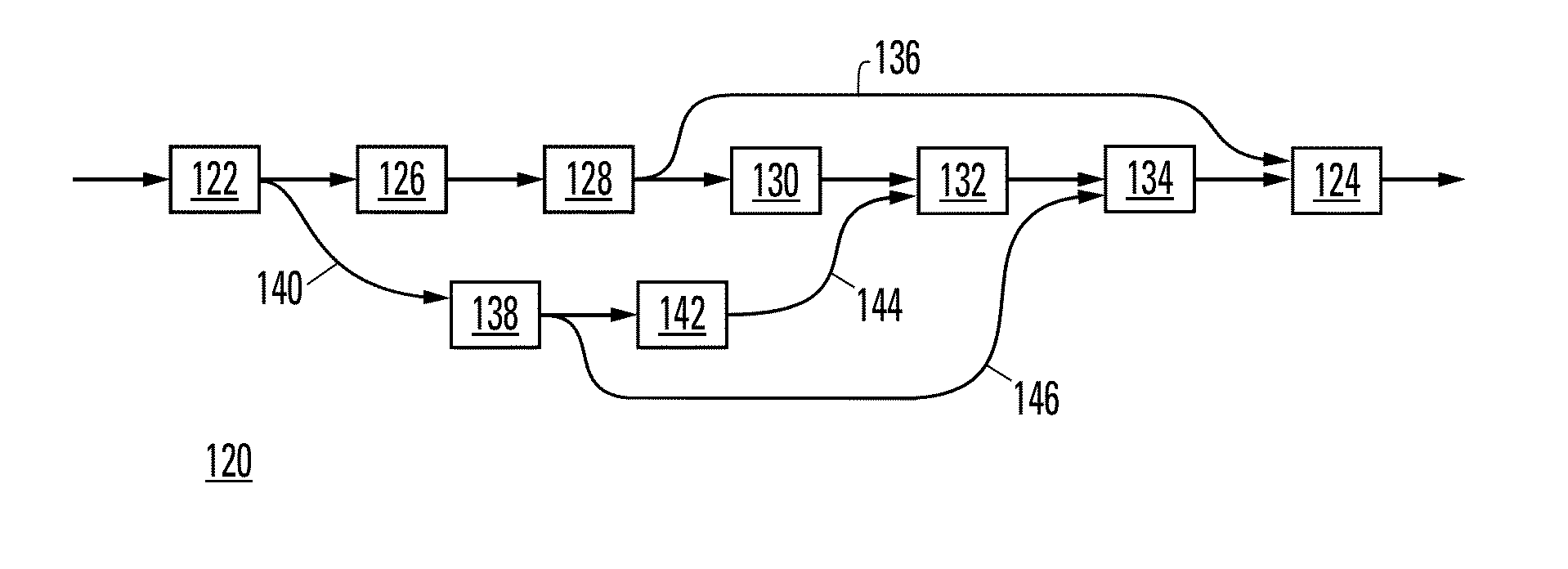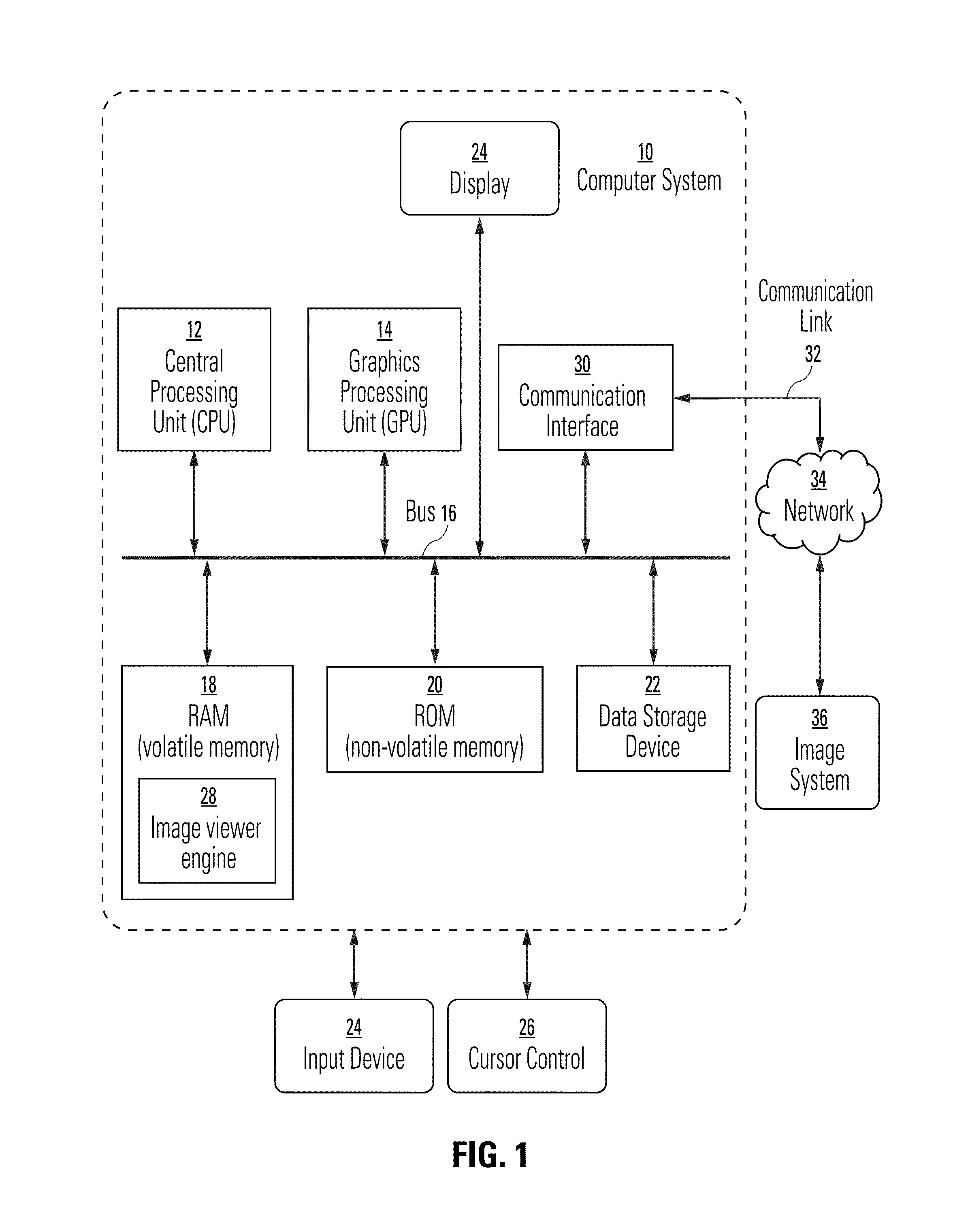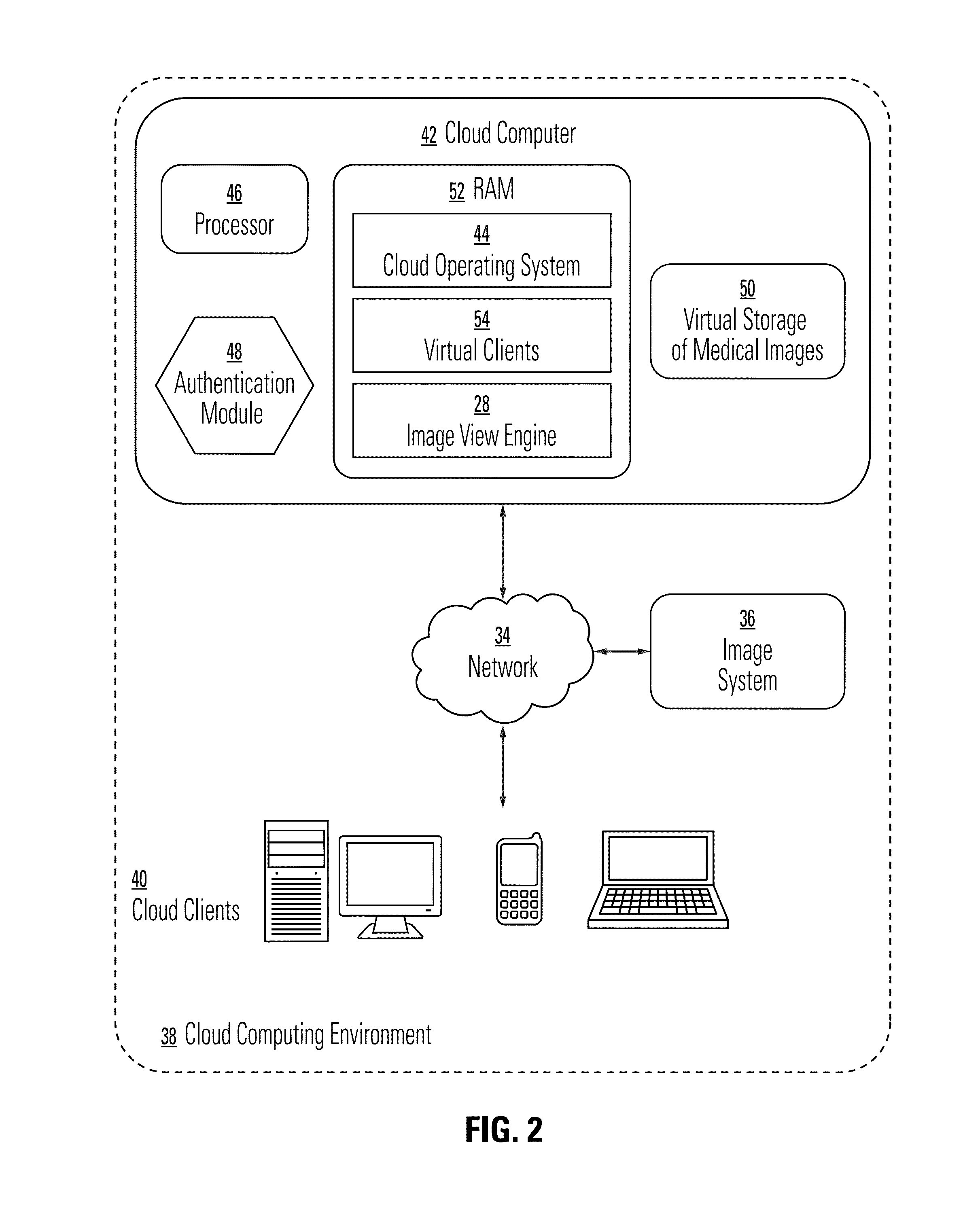Method and pipeline processing system for facilitating responsive interaction
a processing system and responsive technology, applied in the field of processing or inspection applications, can solve the problems of losing any progress made since, difficult limited user's ability to modify past operations, so as to facilitate inspection systems and avoid unnecessary computations.
- Summary
- Abstract
- Description
- Claims
- Application Information
AI Technical Summary
Benefits of technology
Problems solved by technology
Method used
Image
Examples
example a
[0218]Early on, a processing step applies a gamma function, y=xγ for every pixel (say, for example, γ=0.5 (which is equivalent to taking the square root) in order to compress the signal). Several more processing steps then work on this gamma-adjusted signal. Then, at the end of the pipeline, another step undoes the gamma function by applying y=x1 / γ. The two steps must use the same γ value.
example b
[0219]Pan & zoom is applied early in the pipeline in order to crop and / or resample data to reduce the data size to only what will be displayed (for faster processing for the rest of the pipeline steps). However, since some later processing steps may need a neighborhood around each pixel, instead of cropping directly to the displayed region we leave an apron of extra off-screen pixels and crop to that enlarged region. A second stage near the end of the pipeline then crops away the apron. The two stages must also agree on the apron size.
[0220]In pipelines with simple flows, coupled parameters are straightforward since we can set the employed parameters for both steps simultaneously. However, with asynchronous steps, parameters can be mismatched. For example, consider FIG. 18. Say that the step that is changed in FIG. 18A has a parameter that is coupled to another parameter in the output step that we call in diagram FIGS. 18F, 18L, and 18O. In FIG. 18F, data flowing from the first asyn...
PUM
 Login to View More
Login to View More Abstract
Description
Claims
Application Information
 Login to View More
Login to View More - R&D
- Intellectual Property
- Life Sciences
- Materials
- Tech Scout
- Unparalleled Data Quality
- Higher Quality Content
- 60% Fewer Hallucinations
Browse by: Latest US Patents, China's latest patents, Technical Efficacy Thesaurus, Application Domain, Technology Topic, Popular Technical Reports.
© 2025 PatSnap. All rights reserved.Legal|Privacy policy|Modern Slavery Act Transparency Statement|Sitemap|About US| Contact US: help@patsnap.com



